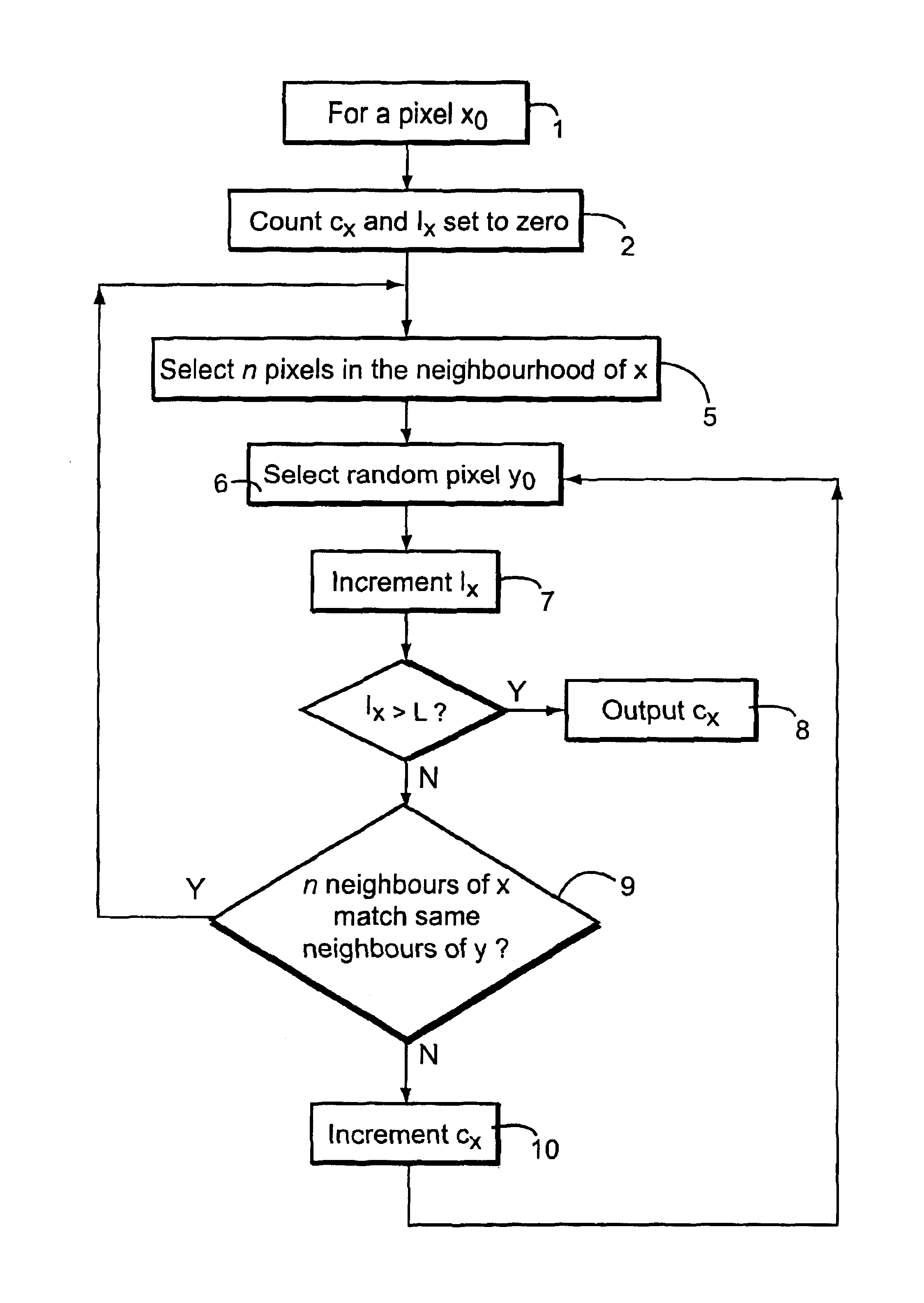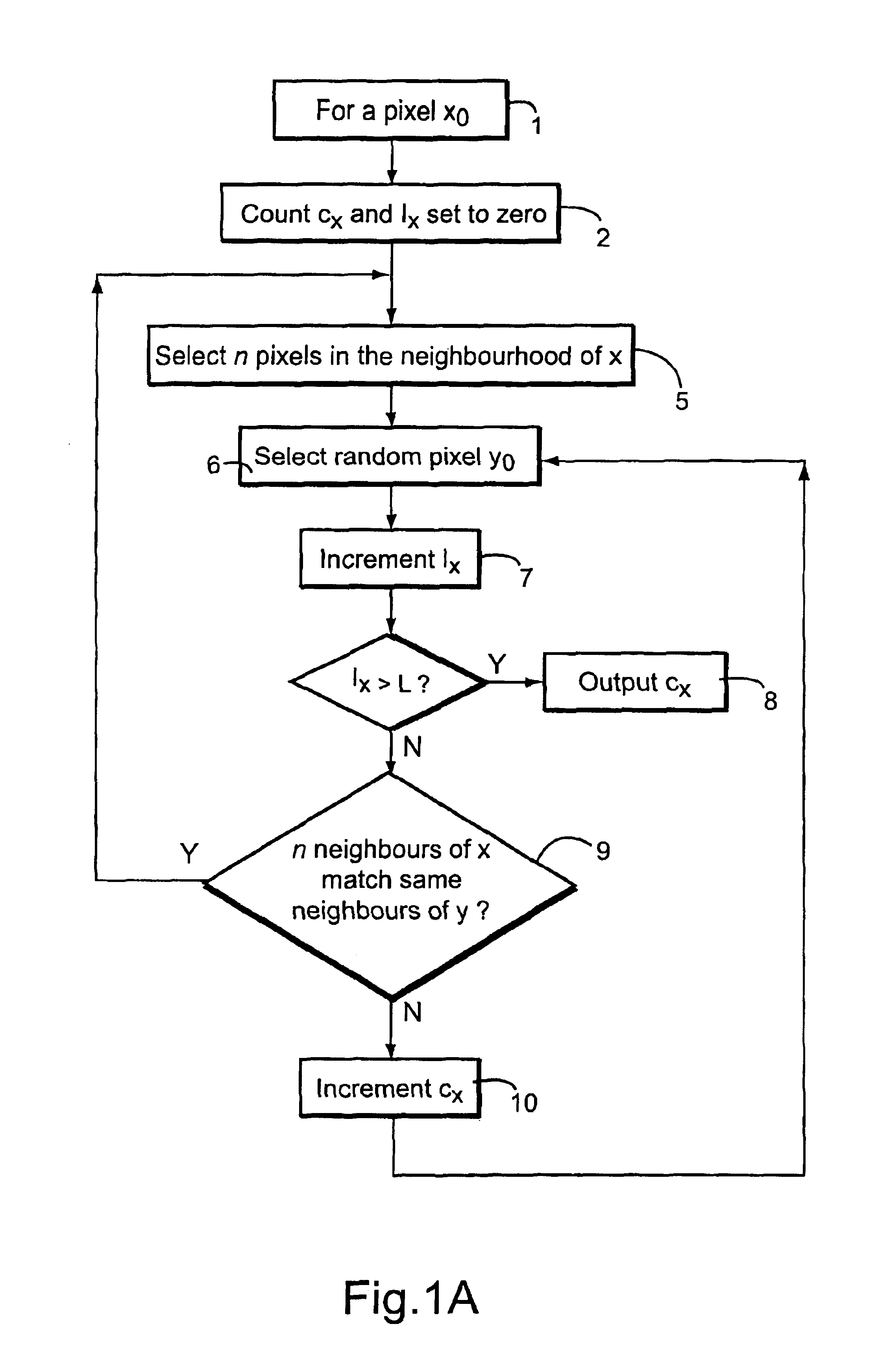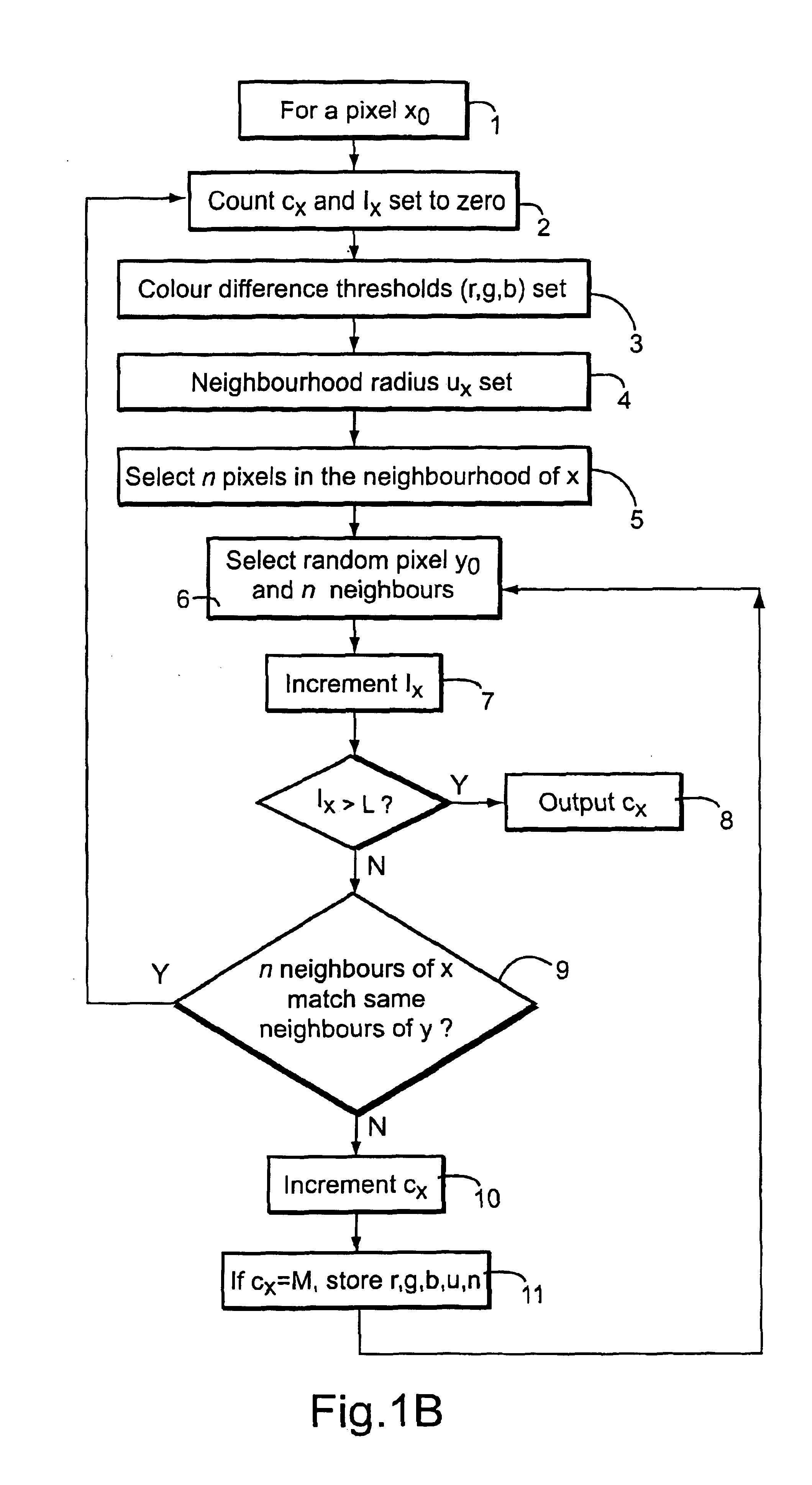Visual attention system
- Summary
- Abstract
- Description
- Claims
- Application Information
AI Technical Summary
Benefits of technology
Problems solved by technology
Method used
Image
Examples
Embodiment Construction
[0079]The components illustrated in FIG. 4 comprise an input means 41, such as a scanner, a central processing unit (CPU) 42, an output unit such as a visual display unit (VDU) or printer 43, a memory 44, and a calculation processor 45. The memory includes stores 440, 444-446, registers 441,447-449 and counters 442, 443. The data and the programs for controlling the computer are stored in the memory 44. The CPU 42 controls the functioning of the computer using this information.
[0080]Considering now FIGS. 1A and 4, an image 40 to be analysed is accessed by the input means 41 and stored in a digital form in an image store 440, an array A of pixels x where each pixel has colour intensities (rx, gx, bx) attributed to it.
[0081]A pixel x0 is then selected from the array A (step 1), and its intensity value (rx, gx, bx) is stored in a test pixel register 441.
[0082]An anomaly count cx, stored in an anomaly counter 442, and a count of the number of pixel comparisons Ix (stored in a comparison...
PUM
 Login to View More
Login to View More Abstract
Description
Claims
Application Information
 Login to View More
Login to View More - R&D
- Intellectual Property
- Life Sciences
- Materials
- Tech Scout
- Unparalleled Data Quality
- Higher Quality Content
- 60% Fewer Hallucinations
Browse by: Latest US Patents, China's latest patents, Technical Efficacy Thesaurus, Application Domain, Technology Topic, Popular Technical Reports.
© 2025 PatSnap. All rights reserved.Legal|Privacy policy|Modern Slavery Act Transparency Statement|Sitemap|About US| Contact US: help@patsnap.com



